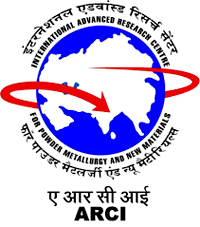March 2020 Science and Technology
Sakshi Education

- EMC 2.0 Scheme will help India become mobile manufacturing hub
The union government has proposed a total outlay for the EMC 2.0 Scheme at Rs.3,762.25 crore, which includes the financial assistance of Rs.3,725 crore and administrative and management expense to the tune of Rs.37.25 crores over a period of eight years.
The new Production-linked Incentive Scheme (PLI) would not only support the Government’s efforts to establish India an integral part of the Global Value Chain (GVC) in the mobile handset. The union government announces a policy that can be a game-changer taking the sector to the next level, and PLI is precisely that. Its visionary, scalable, and global in its outlook.
The Scheme will create a robust infrastructure base for the electronic industry to attract a flow of investment in the ESDM sector and lead to greater employment opportunities.
Currently, 85 percent of the global mobile exports are catered to by two countries - China and Vietnam. Further, only three global ecosystems - Samsung, Apple, and Chinese majors such as Oppo, Vivo, Xiaomi, and Huawei, dominate the multi-billion-dollar mobile phone export. It is well-recognized that India suffers a manufacturing disability vis-a-vis China (19-23 percent) and Vietnam (9-12 percent).
- ICMR received several complaints against misuse of stem cell therapy
Union Minister of State for Health and Family Welfare Ashwini Kumar Choubey informed the Lok Sabha that the Indian Council of Medical Research (ICMR) received several complaints against the misuse of stem cell therapy from various sources.
The complaints are considered in the National Apex Committee for Stem Cell Research and Therapy (NAC-SCRT), and recommendations are forwarded to concerned authorities for appropriate action.
ICMR is finalizing guidelines on the clinical use of stem cells and is framing guidelines for storage and banking of stem cells.
According to the National Guidelines for Stem Cell Research, there is no approved stem cell therapy other than Haematopoietic Stem Cell Transplantation.
- Mylab Discovery Solutions Pvt Ltd developed first COVID-19 test kit
Mylab Discovery Solutions Pvt Ltd, a Pune-based molecular diagnostics company, has developed the first made-in-India test kit for COVID-19.
The kit was developed in a record period of six weeks.
MylabPathoDetect COVID-19 Qualitative PCR kit:
MylabPathoDetect COVID-19 Qualitative PCR kit received commercial approval from the Indian Food and Drug Administration (FDA)/Central Drugs Standard Control Organisation (CDSCO).
The cost of a single kit is Rs.80,000. It can test 100 patients.
Mylab has become the first Indian company to have achieved 100% sensitivity and specificity in the ICMR evaluation.
The COVID- 19 kit has been made as per the World Health Organization (WHO) and Centers for Disease Control and Prevention (CDC) guidelines.
The company has assured that it can produce 1 to 1.5 lakh test kits in a week.
- ARCI developed technology to improve fuel efficiency of internal combustion engines
International Advanced Centre for Powder Metallurgy & New Materials (ARCI) developed ultrafast laser surface texturing technology.
The technology can improve the fuel efficiency of internal combustion engines.
Highlights:
Laser surface micro-texturing offers precise control of the size and shape.
The density of micro-surface texture features gains momentum as a way to control friction and wear.
The special feature of the technology is a pulsating laser beam creates micro-dimples or grooves on the surface of materials in a very controlled manner.
The texture traps wear debris when operating under dry sliding conditions. It provides effects like enhancing oil supply that can lower friction coefficients and may enable reduced wear rate. This will improve the fuel efficiency of internal combustion engines.
- ARI develops wheat variety with high protein
Agharkar Research Institute (ARI) Scientists have developed a biofortified durum wheat variety MACS 4028. The new wheat variety shows high protein content.
New wheat variety MACS 4028:
The wheat variety developed by the ARI scientists show high protein content of about 14.7%
The wheat has a better nutritional quality of zinc 40.3 ppm, and iron content of 40.3ppm and 46.1ppm respectively, good milling quality and overall acceptability.
MACS 4028 is a semi-dwarf variety. The MACS 4028 variety is also included by the Krishi Vigyan Kendra (KVK) program for the United Nations Children's Fund (UNICEF) to alleviate malnutrition in a sustainable way.t matures in 102 days and has shown the superior and stable yielding ability of 19.3 quintals per hectare.
It is resistant to stem rust, leaf rust, foliar aphids, root aphids, and brown wheat mite.
The MACS 4028 variety is also included by the Krishi Vigyan Kendra (KVK) program for the United Nations Children's Fund (UNICEF) to alleviate malnutrition in a sustainable way.
The new variety can boost the Vision 2022 "KuposhanMukt Bharat", the National Nutrition Strategy.
It aims to tackle the hidden hunger in the rural areas of India is being continued using traditional plant breeding approach to achieve KuposhanMukt Bharat.
- IIT-Madras to organize Global Hyperloop Pod Competition
Indian Institute of Technology Madras (IIT-Madras) has announced that it is to organize India's first Global Hyperloop Pod Competition.
The competition is open to all students globally. The final round will take place on the IIT-Madras campus in the month of July 2020.
The main objective of the Global Hyperloop Pod Competition is to raise awareness about the Hyperloop mode of transportation in India.
Indian Hyperloop Pod Competition:
The competition aims to encourage student teams in India and abroad to develop a Hyperloop Pod. With this, they can build the fastest, most innovative, efficient design and prototype of the relevant technologies in the field.
All the engineering colleges across the world can participate in the competition.
It will provide a platform to ideate, design and implement their ideas for the Hyperloop Pods.
- Warm, humid climate might reduce the transmission of Coronavirus
Scientists from the Massachusetts Institute of Technology (MIT), the US suggested that warm and humid weather is linked to the slower spread of the novel coronavirus.
The study also stated that countries that experience monsoon may experience the lesser transmission of the coronavirus.
Study Highlights:
The scientists assessed several data on the number of COVID-19 infections in different parts of the world and compared it with two parameters of weather from all the regions namely temperature and humidity.
The study stated that transmission of COVID-19 has occurred in regions with temperatures between 3 and 17 degrees Celsius. The absolute humidity of the regions ranged from 4 to 9 gram per cubic metre (g/m3).
Also, in countries with a mean temperature greater than 18 degree Celsius and absolute humidity more than 9 g/m3 has reported less than 6% of cases.
As per the analysis, the scientists noted that countries, especially Asian countries, experiencing monsoon might see a slowdown in transmission as absolute humidity is generally above 10g/m3 during monsoon.
- CCMB to begin trial on genome sequencing of Coronavirus
Hyderabad-based CSIR's Centre for Cellular Molecular Biology (CCMB) announced that it is working to sequence the whole genome of the COVID-19 virus that is taken from isolates from people who have tested positive.
COVID-19 Genome Sequencing:
Sequencing the large-scale genome will help us understand how similar or different Indian isolates are, compared with others in the world.
The genome sequencing will help scientists and doctors to understand the rate of mutation and the possible routes of spread.
It will help to understand the biology of the virus.
Earlier, CCMB sought samples from AIIMS for the study purpose.
- DST sets up task force to map technologies by start-ups through AI, IoT
The Department of Science and Technology (DST) set up a COVID-19 task force to map technologies to fund nearly market-ready solutions in the area of diagnostics, testing, healthcare delivery solutions, and equipment supplies.
Highlights:
The COVID-19 task force will map technologies from research and development labs, academic institutions, start-ups, and Micro, Small and Medium Enterprises (MSMEs).
The task force will map delivery solutions including masks, protective gear, sanitizers and affordable screening kits for coronavirus.
It also maps oxygenators, ventilators, data analytics to track, monitor and control the speed of the spread of the virus through artificial intelligence (AI) and the Internet of Things (IoT).
The task force will identify the start-ups that are close to scale up their production in the specified areas.
- ARCI developed a cost-effective solar receiver tube technology for heat applications
 Scientists from the International Advanced Research Centre for Powder Metallurgy and New Materials (ARCI), Hyderabad developed a cost-effective solar receiver tube technology for industrial process heat applications.
Scientists from the International Advanced Research Centre for Powder Metallurgy and New Materials (ARCI), Hyderabad developed a cost-effective solar receiver tube technology for industrial process heat applications.
Highlights:
Solar receiver tube technology is used in Concentrating Solar Thermal (CST).
The receiver tube technology absorbs solar radiation and converts it into heat for the targeted applications, especially in industries. It also exhibits high corrosion resistance suitable for Indian weather conditions.
It provides a viable solution to meet the demands on industrial process heat (=250°C) of a majority of industrial processes.
The receiver tube achieved around 93% absorptance and around 14% emittance along with good thermal stability and high corrosion resistance. The absorber coating has been successfully validated for heat gain and heat loss studies in a testing facility established at ARCI.
The government has also signed MoU with M/s. Greenera Energy India Private Limited for technology transfer. It plans to mass-produce the solar receiver tube for wider market absorption.
- INST Scientists develops calcium-modified carboxymethyl-starch to stop rapid blood loss during accidents
Scientists from the Institute of Nano Science and Technology (INST) have developed a starch-based 'hemostat' material, named calcium-modified carboxymethyl-starch, that can stop life-threatening bleeding after a serious injury.
Calcium-modified carboxymethyl-starch:
The Hemostat material is a biodegradable microparticles. It concentrates the natural clotting factors in blood by physically absorbing excess fluid.
The microparticles were prepared by modifying some of the chemical hydroxyl groups on starch to carboxymethyl groups and incorporating the beneficial calcium ions. This combination increases the aggregation of red blood cells (RBCs) and platelets and speeds up the activation to generate the fibrin protein network that forms a stable blood clot.
The microparticles form a cohesive and adherent gel within 30 seconds after contact with blood in lab tests.
The material has increased absorption capacity, improved absorption, inexpensive, biocompatible, and biodegradable.
It is a versatile, potentially life-saving, and inexpensive product that will bring a realistic solution for lower-income economies worldwide.
- Indian scientists develop friction-reducing nanocomposite coatings to increase system life
Scientists from the International Advanced Research Centre for Powder Metallurgy & New Materials (ARCI) developed a process for size-selective deposition of nanocomposite coatings, which can reduce the friction of these dynamic systems.
Need:
The aerospace, defence, automobile, space devices are in need to reduce friction, wear, and tear caused in the device in order to enhance the life of components.
At present, to reduce friction, the dynamic systems are lubricated, which adds to the cost, complexity, and weight of these systems.
Nanocomposite coatings:
The newly developed coating is of nickel tungsten-based with impregnation of particular sized Silicon Carbide (SiC) submicron particles. It uses economical and straightforward pulsed electroplating or electrodeposition process.
It can provide an excellent combination of wear and corrosion resistance with the low friction coefficient and good oil retention capacity.
The coating can withstand corrosion due to salt spray better than many similar wear-resistant coatings available in the market.
- Google appointed Karan Bajwa as MD of Google Cloud in India
Google appointed Karan Bajwa as Managing Director (MD) of Google Cloud in India. He will advise Google Cloud's work with the local developer ecosystem and India-based Global System Integrators (GSIs).
Google Cloud's field sales, partner, and customer engineering organizations in India will report to Bajwa. He will be responsible for driving all revenue and go-to-market operations for Google Cloud's extensive solution portfolio that includes Google Cloud Platform and G Suite in the country.
Karan Bajwa:
Karan Bajwa is a senior leader with over three decades of leadership experience. He recently served as MD for India and South Asia for IBM.
Before that, he worked as an MD in Microsoft for nine years. He led the company's operations in India. He worked with Cisco Systems in India and Singapore.
- DAC approves procurement of 83 indigenous Tejas fighter jets for IAF
The Defence Ministry's Defence Acquisition Council (DAC) approved for the procurement of 83 indigenous Tejas fighter jets for Indian Air Force (IAF) with the more advanced configuration on 18 March.
The proposal will be forwarded for the approval of the Cabinet Committee on Security (CCS).
Highlights:
The procurement of fighter jets will be a major boost to Make in India.
The aircraft is indigenously designed, developed and manufactured by HAL and several local vendors.
HAL's 83 fighter jets are of the more advanced Mk1A version of the aircraft.
The expected cost of the aircraft is Rs.39,000 crores.
Earlier, GoI has placed an order of 40 Tejas aircraft with HAL in initial configurations.
With this procurement, IAF aims to meet the requirements of its squadron numbers and modernize its inventory with fourth-generation plus and fifth-generation aircraft.
- SpaceX to launch its first manned flight to ISS in 2020 May
SpaceX has announced that it is to launch its first manned flight to the International Space Station (ISS) in May 2020.
The announcement comes despite the COVID-19 epidemic.
SpaceX 1st manned Mission:
SpaceX' Falcon 9 rocket is to launch the Crew Dragon. It will carry NASA astronauts Bob Behnken and Doug Hurley to space from Launch Complex 39A at NASA's Kennedy Space Center in Florida.
NASA is to quarantine the astronauts for two weeks before their missions to ensure they don't carry illnesses to space.
NASA's Commercial Crew Program partnered with SpaceX through a public-private partnership to launch astronauts on American rockets and spacecraft from American soil.
The program aims to provide safe, reliable, and cost-effective transportation to and from the space station, which will allow for additional research time and will increase the opportunity for discovery aboard humanity's testbed for exploration.
- ISRO to launch 36 missions in the current fiscal year
Union Minister of State (Independent Charge) Atomic Energy and Space, Dr. Jitendra Singh, announced that the Indian Space Research Organization (ISRO) had planned 36 missions for the fiscal year 2020-21.
ISRO is to send up ten earth observation satellites during 2020-21.
Mission of ISRO for FY-2020-21:
Earth observation satellite- 10
Communication satellite- 3
Navigation satellite-
Space science satellite- 3
Technology Demonstration- 1
PSLV- 10
GSLV MK II- 3
GSLV MK III- 1
Small Satellite Launch Vehicle- 2
Gaganyaan (Unmanned mission)- 1
ISRO has focused on peaceful uses of Outer Space. So far, Space Technology has been used for the benefit of the country and society. It provides solutions for developmental activities and address problems of the society at large.
- UAHS develops Sahyadri Megha, a new red variety of paddy
 The University of Agricultural and Horticultural Sciences (UAHS) of Shivamogga developed 'Sahyadri Megha,' a new red variety of paddy, as a part of its initiative to prevent a decline in the area under paddy cultivation.
The University of Agricultural and Horticultural Sciences (UAHS) of Shivamogga developed 'Sahyadri Megha,' a new red variety of paddy, as a part of its initiative to prevent a decline in the area under paddy cultivation.
The new red variety of paddy is resistant to blast disease and is rich in nutrients.
Sahyadri Megha:
Sahyadri Megha variety of paddy is developed under the hybridization breeding method by crossing Jyothi variety with Akkalu, a native disease-resistant, and protein-rich paddy variety.
The research work for the development of high-level resistance to blast disease was commenced in 2009.
The new variety of paddy was approved by the State-level Seed Sub-Committee. The new variety will be made available for farmers from the coming Kharif season.
The aroma and taste of the new variety paddy was verified and found satisfying.
The new variety of paddy will be notified under the Indian Seed Act 1966, and it will become a part of the seed chain.
It is expected that the Sahyadri Megha variety will fetch a good price for its nutrition values, aroma, and taste as it is disease-resistant, the cultivation cost will be low.
- Infosys partners with Qualcomm to offer smart cities solutions
Software major Infosys partnered with the US-based chipmaker Qualcomm to offer smart cities solutions through Qualcomm's accelerator program.
The partnership will provide solutions for smart stadiums, smart venues, and smart event management.
Highlights:
The Accelerator program will connect cities, municipalities, state-run agencies, and enterprises with Qualcomm Technologies' ecosystem. This will help deliver efficiencies, cost savings, and access to solutions for smart cities' problems.
The solutions have been built upon Qualcomm's proprietary framework for smart spaces. It offers features for building and resource management, physical assets management, and occupants' safety and security.
The framework uses digital technologies to deliver an enhanced user experience for personal comfort, wellness, collaboration, and convenience.
It will also optimize resources for easy maintenance and improved efficiencies.
- Eleventh Bengaluru INDIA Nano conference and exhibition held at Bengaluru
Eleventh Bengaluru INDIA Nano conference and exhibition showcased technologies and products developed by academia and companies in nanotechnology.
The three-day event was organized by the Department of Science and Technology (DST), Government of Karnataka, and Jawaharlal Nehru Centre for Advanced Scientific Research (JNCASR), in association with other Government Institutions and corporate companies.
Highlights:
Research work to tackle infections related to antimicrobial resistance, eco-friendly batteries, and tools on nanotechnology, which was developed for agriculture were showcased by JNCASR at the exhibition.
A set of Zn-air eco-friendly batteries were also displayed.
Rhino Lure and Rhyncho Lure, eco-friendly, cost-effective, and residual free control strategy tools to monitor and manage Rhinoceros Beetle and Red Plam Weevil pests and protect crops like coconut, date palm, oil palm, and arecanut were exhibited.
- ARI developed ARI-516, a hybrid variety of grapes
Scientists from the Agharkar Research Institute (ARI) have developed a hybrid variety of grapes, ARI-516.
It is resistant to fungal diseases, high yielding, and has excellent juice quality.
Highlights:
ARI-516 was developed by interbreeding of two species from the same genus Catawba variety of Vitislabrusca and Beauty seedless variety of Vitisvinifera.
The hybrid suitable for the preparation of juice, raisin, jam, and red wine, and farmers are enthusiastically adopting the variety.
It is expected that the hybrid can benefit farmers, the processing industry, and consumers.
The grape has superior quality fruits and higher yield per unit area. It matures in 110-120 days after pruning.
ARI-516 grape variety has been recently identified for release by the Varietal Identification Committee of ICAR-All India Co-ordinated Research Project on Fruit, for cultivation states like Maharashtra, Punjab, Telangana, and Tamil Nadu.
- Indo-Thai workshop on stellar variability and star formation was held at ARIES
Indo-Thai workshop on stellar variability & star formation was held at ARIES, Nainital, Uttarakhand.
The one-day workshop was organized by Aryabhatta Research Institute of Observational Sciences (ARIES), Department of Science and Technology (DST), that functions under the Ministry of Science & Technology.
The workshop aimed to strengthen the ongoing collaboration and expand the Indo-Thai cooperation from stellar sources to other areas of astronomy and astrophysics such as extra-galactic astronomy and instrumentation.
Highlights:
The workshop deliberated on various topics, including stellar variability, star formation, stellar abundance, transient events, and instrumentation.
The workshop hosted 14 talks by the scientists and students of both the countries.
It highlighted the setting-up of the cooperation in the fields of Science and Technology by DST and the Ministry of Science & Technology in Thailand after the sanctioned of two joint bilateral programs for joint research in the area of Astronomy and Astrophysics.
The workshop discussed the collaborations and joint ventures that help to exchange the knowledge of the investigators involved in the projects and gives the opportunity to train the young researchers.
The importance of Indo-Thai collaboration in science and technology was strengthened.
It also invited the astronomers from India and Thailand for cooperation in space science and instrumentation.
- India ranks second as the most promising source of disruptive technology
According to KPMG's "2020 Global Technology Industry Innovation Survey" report, India shared the second position with China as the most promising source of disruptive technology in the world.
The report was topped by the United States as the most promising market for developing disruptive technologies.
Highlights:
The report ranked countries that are committed to setting up strong innovation ecosystems.
In terms of the world cities, it highlighted that Silicon Valley/San Francisco would be leading technology innovation hubs over the next four years. Under this category, Bengaluru entered the top 10 list and ranked ninth. Mumbai was ranked 16th.
In terms of hubs globally outside Silicon Valley, Singapore topped the global rankings for the year 2020. Singapore offers strong government support, advanced IT infrastructure, IP protection laws, and a deep pool of talent. It was followed by London, Tel Aviv.
- GOKADDAL-worlds first Digital Solutions Exchange cloud launched in India
The world's first Digital Solutions Exchange in the cloud "GOKADDAL" has been launched in India.
GOKADDAL will revolutionize the way digital solutions are sourced, delivered, and managed.
GOKADDAL:
The cloud-based platform is created to help the customers realize their digital transformation vision by bringing them the right solutions with the right tools and right providers.
www.gokaddal.com is a marketplace and cloud delivery platform. The platform focus on Automation, Artificial Intelligence, Analytics, and Augmentative Technologies.
GOKADDAL will create a new and significant revenue base for the solution providers.
GOKADDAL provides features including Solution search, compare, use EOI/Bidding process to select the right solution in the right budget.
For customers, it offers access to customer queries, EOI/bids, offer special offerings, and participate in solution events to showcase its capabilities.
- IISc researchers develop a method to rapidly detect disease-causing bacteria
Researchers at the Indian Institute of Science (IISc) have developed a new method to rapidly identify and check whether a disease-causing bacterium is alive or dead.
The uniqueness of the method is the rapidity and sensitivity of the method.
New Method Highlights:
The new method uses Raman spectroscopy to recognize bacteria and check for their viability, or their state of being alive. The Raman spectroscopy technique is usually used to identify chemical bonds in materials.
The method can be potentially modified into a bed-side, table-top device for diagnosis.
Quick detection of the disease-causing agent or pathogen and checking for whether it is alive or not in the patient samples are vital to treating infectious diseases. By identifying the pathogen's viability, the physicians generally decide the dose of antibiotics to be prescribed and reduces the possibility of overprescription that can lead to antibiotic resistance.
- Google launched a tool to help developers make websites more color blind friendly
Google launched a new Chrome tool that will allow developers to tune their websites for visual impairments like color blindness to help them fix accessibility issues on their sites.
Highlights:
The developers can use this feature by launching Google Chrome.
The developers can head to the browser's Developer tools. Choose More tools, then select Rendering and Emulate visual deficiencies.
The emulate vision deficiencies features a drop-down menu of vision limitations.
The developer should select one from the menu, such as tritanopia (a condition where a person cannot distinguish the colors blue and yellow).
It would allow developers to mimic the condition, changing the colors of their site so they can see if it's difficult to read without those specific colors.
Google's new developer tools follow the release of Firefox's visual disability dev tools.
- ARI studies methane-oxidizing bacteria for methane mitigation
Scientists at Agharkar Research Institute (ARI), Pune, have isolated 45 different strains of methanotrophic bacteria.
These bacteria have been found to be capable of reducing methane emissions from rice plants.
Methanotrophic bacteria:
Methanotrophic bacteria metabolize and convert methane into carbon-di-oxide (CO2).
Methanotrophs can effectively reduce the emission of methane.
In rice fields, the bacteria are active near the roots or soil-water interfaces.
ARI Scientist has enriched, isolated, and cultivated the 45 different strains of methanotrophs and created the first indigenous methanotroph culture.
They have also isolated indigenous methanotrophs from Western and Southern India, mainly from rice field soils and freshwater mud. They have documented two novel genera and six novel species of methanotrophs from rice fields in Western India.
Some of the bacteria strains were used as bio-inoculants in rice plants during the pot trials.
During the trial, the scientist found a decrease in methane emissions in inoculated plants with a positive or neutral effect on the growth of the rice. It is expected that it could lead to the development of microbial inoculants for methane mitigation in rice.
Rice fields contribute to nearly 10% of global methane emissions.
- India Post launched free digital parcel locker service
The Department of Posts has introduced a free digital parcel locker service in the city from 11 March for the first time in India.
The Chief Post Master General, West Bengal Circle, Gautam Bhattacharya, inaugurated the service from the Nabadiganta IT Post Office.
Free digital parcel locker:
Free digital parcel locker facility will be available in two post offices in Kolkata, one in the Nabadiganta IT Post Office in Sector 5 of Salt Lake City and two another in New Town.
The locker will enable customers to collect their consignment from specified post offices at their convenience.
The facility is popular in European countries. It will be limited to consignments received through registered post or speed post.
This facility will be given for the working people who cannot receive parcels because they have no one at home to receive consignments during office hours
Specific locker number will be given to a customer, where India Post will drop the parcel. The consignments will be dropped into the digital parcel locker, and an SMS will be issued along with an OTP number to the customer concerned.
The consignment will remain accessible to customers for seven days during which they can collect the parcel at any time of the day.
- Astronomers found Iron raining exo-planet
Astronomers of Spain- Institute of Astrophysics of the Canary Islands (IAC) has discovered an exo-planet WASP-76b where it "rains iron."
The conditions of the exo-planet were discovered by Echelle Spectrograph for Rocky Exo-planets and Stable Spectroscopic Observations (ESPRESSO).
The high-resolution instrument is installed on the European Southern Observatory's Very Large Telescope (VLT) in Chile.
Exoplanet WASP-76b:
Exoplanet WASP-76b is located 360 million light-years away, toward the constellation Pisces.
It has days when its temperatures exceed 2,400 degrees Celsius (4,352 degrees Fahrenheit). The temperature is hot enough to evaporate metals.
At nights, with strong winds, cool down the iron vapor so that it condenses into drops of Iron.
The planet always keeps the same face towards its star as it rotates around it.
- Astronomers detect biggest explosion since Big Bang
 The blast is the biggest since the universe began. It occurred at the center of a galaxy cluster some 390 million light years away from Earth.
The blast is the biggest since the universe began. It occurred at the center of a galaxy cluster some 390 million light years away from Earth.
The cosmologial model to describe a rapid expansion of matter and energy that created the observable universe. The explosion reportedly released five times more energy than the previous record holder.
The blast occurred at the center of the Ophiuchus cluster of galaxies, some 390 million light years away. The cluster is a conglomeration of thousands of galaxies, hot gas and dark matter bound together by gravity.
Astronomers used NASA’s Chandra X-Ray Observatory to make the discovery, as well as a European space observatory and ground telescopes. Scientists picked up the first sign of the explosion in 2016.
Chandra images of the cluster revealed an unusual curved edge, but scientists ruled out a possible eruption given the amount of energy that would have been needed to create such a large cavity of gas. The curviture was later confirmed to be a cavity.
- Astronomers discovered 17 new planets
Columbia researchers have discovered 17 new planets by combing through data gathered by NASA's Kepler space telescope.
The planets include a potentially habitable Earth-sized world. The researchers looked for planets, especially those lying in the potentially habitable "Goldilocks Zone" of their stars, where liquid water could exist on a rocky planet's surface.
Over 16 new planets were discovered. The smallest is only two- thirds the size of the Earth one of the smallest planets to be found with Kepler data so far.
The remaining planets range in size up to eight times the size of the Earth.
KIC-7340288 b:
The current findings include a rare planet named KIC-7340288 b.
The planet is located about a thousand light-years away
The planet is one and a half times the size of the Earth
It has a year that is 142 and a half days long. It orbits its star at 0.444 Astronomical Units (AU).
The planet gets about one third of the light that the Earth gets from the Sun.
- RaIDer-X, new explosive detection device, was launched at 2020 NWED
The National Workshop on Explosive Detection (NWED 2020) was inaugurated by Secretary, Department of Defence Research & Development and Chairman Defence Research & Development Organisation (DRDO) Dr. G Satheesh Reddy. The workshop is being held on 1-2 March.
NWED 2020:
The workshop provided a platform to scientists, technocrats, and users to share knowledge, experience and updated information on the technological advancements made in the recent past.
The workshop will develop explosive detection devices and keep it along with the recent development and advancements in the field of explosive detection.
A new explosive detection device named "RaIDer-X" was unveiled at the National Workshop.
A souvenir comprising of abstracts from eminent speakers of DRDO laboratories, IITs, Advanced Centre of Research in High Energy Materials, University of Hyderabad, other universities and delegates was released.
RaIDer-X:
RaIDer-X was co-developed by the High Energy Materials Research Laboratory (HEMRL), Pune and Indian Institute of Science (IISc), Bangalore.
The explosive detection device has the capability to detect explosives from a stand-off distance.
The system can be modified to expand its capability to detect a number of explosives in pure form and with the contaminants and Bulk explosives in concealed conditions.
The portable devices can now be safely and effectively used by security agencies.
- Scientists found bacteria that can replace fertilizers, fungicides in tea plants
Researchers at the Institute of Advanced Study in Science and Technology (IASST) Guwahati found significant plant-growth-promoting and antifungal activities of endophytic actino bacteria associated with Tea plant and related genera, Eurya.
Highlights:
They find potent plant growth-promoting strains.
The study stated that the application of endophytic Actino bacteria could reduce chemical inputs in Tea plantation.
The team isolated 46 endophytic actino bacteria found in diverse environments that live within a plant for at least part of its life cycle without causing apparent disease associated with Tea plants and characterized through molecular techniques.
Out of 46 isolates, 21 isolates inhibited the growth of at least one test fungal phytopathogens and strains SA25 and SA29 exhibited broad-spectrum antifungal activity.
The research confirmed that endophytic actino bacteria have the potential to exhibit multiple growth-promoting traits such as IAA production, phosphate solubilization, siderophore production and so on that positively influence tea growth and production.
Tea:
Tea (Camellia sinensis) plays an important role in the Indian economy as a major portion of the tea produced is exported.
Due to higher demand for chemical residue-free made tea by the importing countries has led to a decline in the export of tea.
The recent study attempts the use of endophytic actino bacteria having plant beneficial characteristics to reduce and replace the use of chemical inputs in the tea industry.
- NASA reveals hole on Mars that could hold clue to life on Red Planet
NASA released a photo of the mysterious hole on Mars that could hold a clue to life on Mars. The unusual hole on the planet was discovered in 2011.
The image was taken by the High-Resolution Imaging Experiment (HiRISE) instrument. The photo was taken by Mars Reconnaissance Orbiter which currently circles the planet.
Martian Pit:
The image depicted the slopes of Mars' Pavonis Mons volcano.
It is expected that the Martian pit might contain life as they have interior caves that remain relatively protected from the planet's harsh surface.
As per the image, the hole has opened about 35 m across to an underground cavern which is estimated to be around 20 m deep.
The crater is being studied to find out the reason for the circular crater surrounding this hole.
- SCTIMST develops flow diverter stent to treat aneurysms
Researchers from Sree Chitra Thirunal Institute of Medical Science and Technology (SCTIMST) developed an innovative intracranial flow diverter stent.
The device is used for the treatment of aneurysms of the blood vessels of the brain. Aneurysms are the enlargement of an artery caused by weakness in the arterial wall.
Flow Diverter Stent:
The Flow Diverter Stent will divert blood flow away from the aneurysm when deployed in the artery in the brain bearing the aneurysms. It reduces the chances of its rupture from the pressure of blood flow.
The stent has been designed to have a better grip on the walls of arteries of complex shapes in order to reduce the risk of migration of the device.
The device has the advantages of being flexible and adaptable to the shape and course of the vessel.
It promotes healing of the vessel wall by removing the constant stress of blood flow on it. The spontaneous rupture of the aneurysm might result in bleeding into the space around the brain, resulting in a condition called subarachnoid hemorrhage (SAH). It will lead to paralysis, coma or death.
- Chandrayaan-III mission to be launched in first half of 2021
The Union Minister Jitendra Singh announced that ISRO's Chandrayaan-III would be launched in the first half of 2021.
A slight delay might happen in the launching of the third moon mission.
Chandrayaan-III mission:
Chandrayaan-III mission was configured based on the lessons learnt from Chandrayaan-II.
The revised configuration is expected to take care of the robustness in design, capacity enhancement for mission flexibility.
It retains the heritage of Chandrayaan-II.
Published date : 30 Mar 2020 08:22PM



















